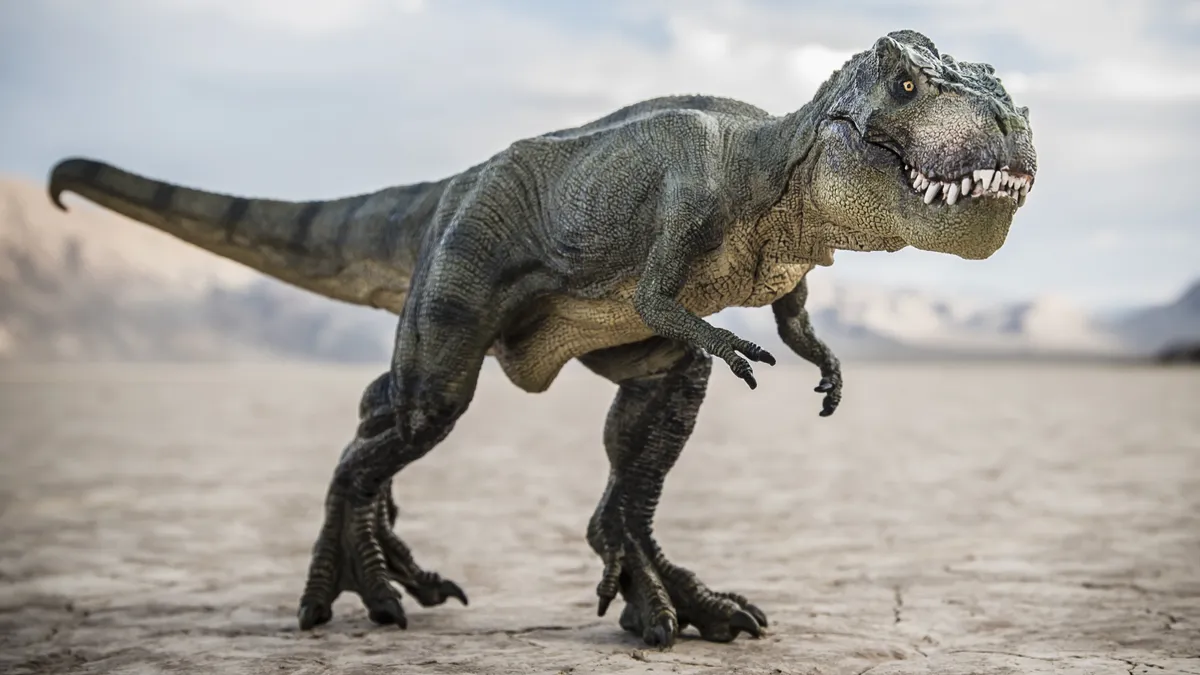
The renowned Tyrannosaurus rex may have evolved in a vastly different location than previously believed, according to new research. This study builds upon earlier findings suggesting that the ancestors of T. rex originated in Asia and subsequently migrated to North America during periods of lower sea levels, which created a land bridge between the continents. Published on May 7 in the journal Royal Society Open Science, this latest research provides compelling evidence that the fearsome T. rex actually originated in what is now North America, while its direct ancestors were based in Asia, making a journey across ancient landscapes over 70 million years ago.
The T. rex roamed the Earth approximately 67 to 66 million years ago during the Late Cretaceous period, growing to staggering sizes of up to 12.5 feet (3.8 meters) tall at the hips and reaching lengths of 41 feet (12 meters). Most fossils of this iconic dinosaur have been found in the U.S. states of Montana and South Dakota, as well as in Alberta, Canada. This region was once part of an island continent known as Laramidia, which extended from present-day Alaska down to Mexico.
The origins of the Tyrannosaurus rex have sparked intense debate among paleontologists. While earlier studies suggested that the ancestors of T. rex likely emerged in Asia, the new research supports the idea that T. rex evolved in North America after migrating from its Asian ancestors. According to study lead author Cassius Morrison, a doctoral student at University College London (UCL), “Our modeling suggests the 'grandparents' of T. rex likely came to North America from Asia, crossing the Bering Strait between what is now Siberia and Alaska.”
The researchers employed a model that analyzed the discovery locations and timelines of various tyrannosaurid species, alongside their evolutionary trees and local climates. Their findings indicate that T. rex fossils are widely spread across Laramidia, and its direct ancestor was likely present in both Asia and North America. This suggests a migration from Asia to North America occurred between the Late Campanian and Early Maastrichtian ages, around 72 million years ago.
This research also aligns with previous studies that found T. rex had closer anatomical ties to Asian relatives like Tarbosaurus than to North American counterparts such as Daspletosaurus. The abundance of T. rex fossils in North America is notable, yet the researchers believe that fossils of T. rex’s direct ancestors may still be undiscovered in Asia.
Steve Brusatte, a paleontologist at the University of Edinburgh and co-author of the 2016 study on T. rex's origins, praised the new research, referring to it as a “fine scholarly work.” Brusatte pointed out that while T. rex is often seen as the quintessential American dinosaur, it was, in fact, an immigrant from Asia.
The study also examined the factors contributing to the massive sizes of tyrannosaurids and their relatives, the megaraptors. Both groups are believed to have rapidly evolved larger body sizes around the same time, influenced by a global temperature peak known as the Cretaceous Thermal Maximum (CTM), which occurred approximately 92 million years ago. This warming period resulted from spikes in atmospheric CO2 and methane due to volcanic and tectonic activity, with sea surface temperatures in tropical regions reaching as high as 95 degrees Fahrenheit (35 degrees Celsius).
Following the CTM, as atmospheric greenhouse gas levels and global temperatures declined, the researchers hypothesize that tyrannosaurids and megaraptors thrived while many other large dinosaur species faced extinction due to falling temperatures. This left a niche open for these formidable predators to evolve into even larger sizes. Co-author Charlie Scherer, a master's graduate from UCL, emphasized that these findings illuminate how the largest tyrannosaurs came to dominate North and South America during the Cretaceous period, and how climatic shifts influenced their growth trajectories.
In conclusion, the new study sheds light on not only the geographic origins of Tyrannosaurus rex but also the ecological factors that allowed these magnificent creatures to achieve their gargantuan sizes. As paleontologists continue to unravel the mysteries of dinosaur evolution, the climate's role in shaping these iconic species becomes increasingly clear.